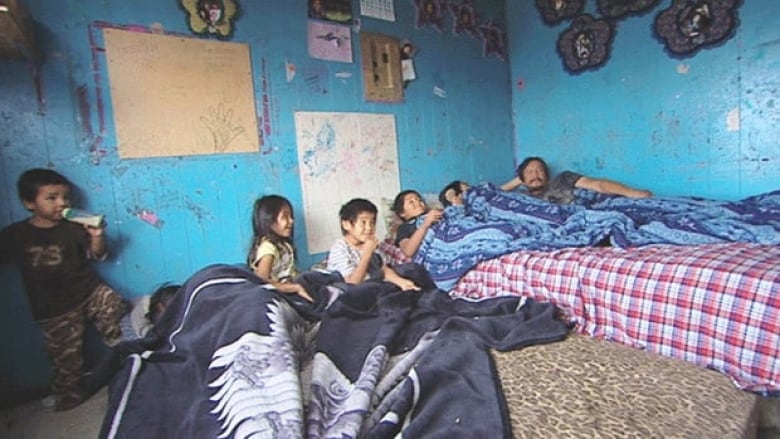Indigenous child poverty: act now or risk another lost generation, study says
Study is an update to one published three years ago by the Canadian Centre for Policy Alternatives

Ontario Regional Chief Isadore Day says it will take more than just money to fix the problem highlighted in a recent report that shows more than half of First Nation children across the country live in poverty.
The data compiled by the Canadian Centre for Policy Alternatives shows the poverty rate is 51 per cent for First Nation children living off reserve.
The study says on-reserve, the child poverty rate is 48 per cent in Ontario and 60 per cent nationally.
"We need to come out of this with realistic investments not just looking at putting certain investments in the area of employment," Day said.
"We also need to recognize social determinants of health and issues that contribute to the grinding impacts of poverty that need to be addressed like housing, water and transportation."

Day noted a report like this provides clarity and will hopefully bring about change.
The study which is an update to a study published three years ago makes four recommendations as part of a poverty reduction plan:
- Do a better job of tracking poverty rates on reserves or territories
- Improve direct income supports
- Improve employment prospects
- Begin implementing longer-term solutions
"These first steps will not eliminate the enormous gap in circumstance between children in Canada but they may slow or reverse a worsening trend of increasing poverty among First Nations children on reserve," the report said."If we are to restore some hope to communities suffering from a pandemic of adolescent suicide, it is one place to start."
Daniel Wilson, aresearch associate with the Canadian Centre for Policy Alternatives,told CBC News that Canada needs "to look at the policies of the federal government and their responsibilities for status First Nations people in Canada."

The study found three distinct levels of poverty among indigenous children in Canada:
- 13 per cent of non-indigenous, non-racialized and non-immigrant (mostly white) children live in poverty
- 22 per cent of indigenous and disadvantaged children live in poverty
- 51 per cent of children with a First Nation status live in poverty, while that number climbs to 60 per cent for children on reserve
Much of the poverty level connects back to their parents'lack of income, the study notes. Other problems they face include water quality, housing, overcrowding, education (no schools or no extra amenities), as well as mental health issues.
Policy making 'void of information'
Poverty rates are highest for First Nations kids on reserves in Manitoba at 76 per cent and Saskatchewan at 69 per cent, the study found.Ontario has an on-reserve child poverty rate of 48 per cent.
The rates of poverty on-reserve worsened between 2005 and 2010, the researchers found, citing long-standing barriers such asunderfundedschools and child welfare services that stand in the way of kids achieving their full potential.
Senior economist David Macdonald, who co-authored the report, said the figures clearly show deplorable rates of child poverty on reserves in Canada.
"One of the interesting things is that, despite the fact that we have seen strong economic growth in the2000s,in Alberta in particular, as well as Saskatchewan and Manitoba, we are just not seeing that filter down to the on-reserve level," he said.
"We are to some degree seeing it trickle down to the off-reserve population ... but we are just not seeing the benefits on reserve."
Those reserves that have a resource-revenue sharing partnership with the government have an improved poverty rate.
- Poverty, inequality fuelling suicide crisis, First Nations leader says
- Child poverty particularly bad on First Nations reserves
Wilson said he is hopeful measuring and reporting on the problem will help to end "policy-making in a void of information."
The Liberal budget tabled in March made substantial investments on housing, clean water and education for First Nations, the study noted, but the bulk of that money is not scheduled to be spent for a few years yet.
"It will take some time to tell whether these initiatives sufficiently combat chronic overcrowding in houses, boil water advisories and substandard schooling," the report said.
"However, the investment signals a welcome change in approach to Indigenous issues."
with files from Angela Gemmill, The Canadian Press, edited and packaged by Wendy Bird












_(720p).jpg)


 OFFICIAL HD MUSIC VIDEO.jpg)
.jpg)



























































































